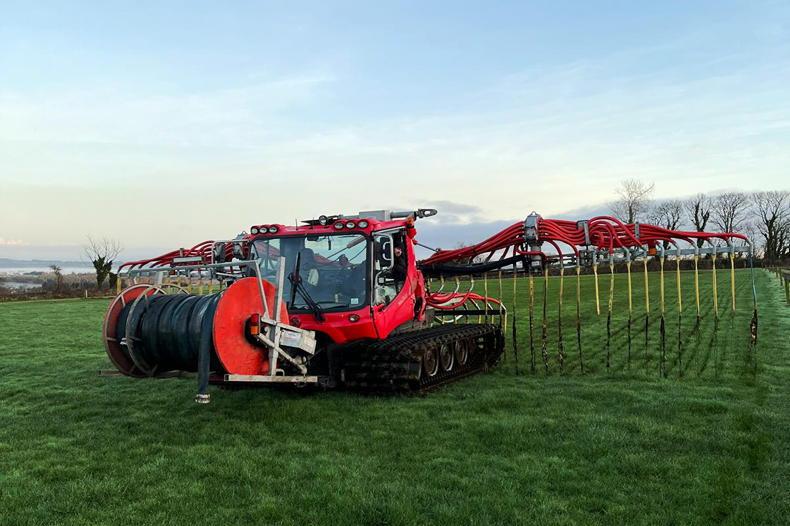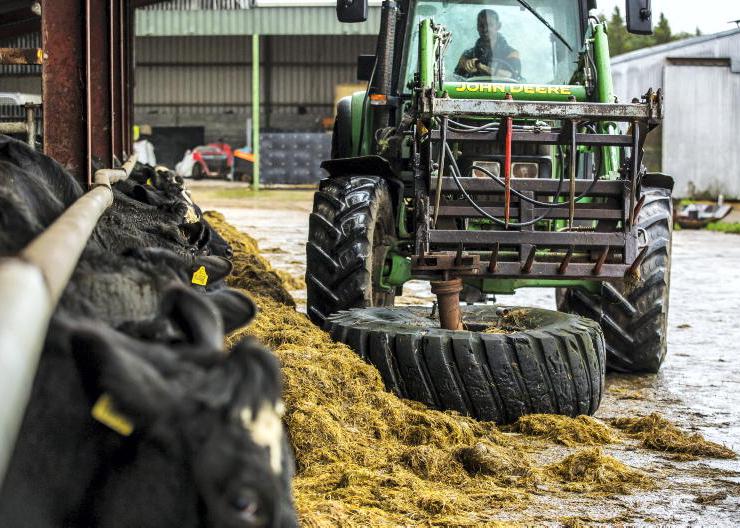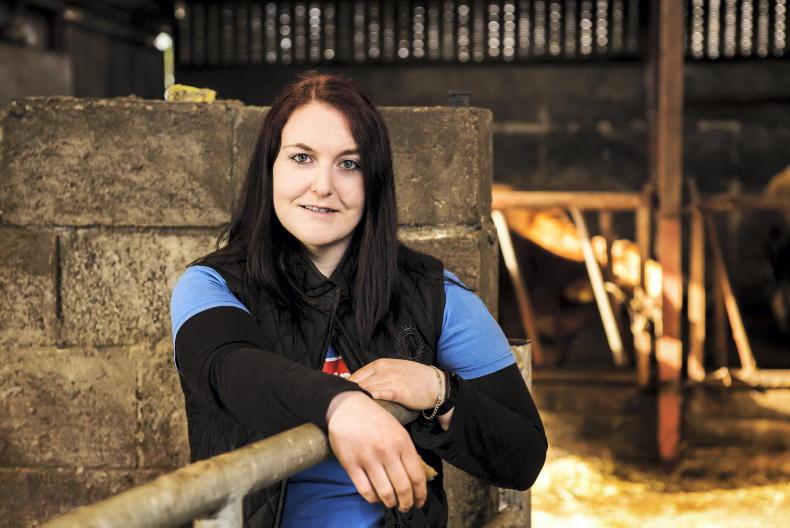Silage season is hitting top gear and with weather forecasts pointing to another dry week ahead, there will be plenty more first cut saved across the country.
Once grass has been harvested, thoughts should be turning towards closing ground off for second cut.
When it comes to closing up grass for second cut, outlined are five things to keep in mind.
1. Close off grass early
Grass growth will remain close to peak levels for another fortnight to three weeks, then gradually tail off towards during the second half of June.
So the earlier ground is closed up for second cut, the better. Having swards closed and fertilised early helps to harness these higher growth rates, driving yields in second cut.
By all means, turn cattle into silage fields after harvesting first cut and clean up grass at the field boundaries, giving grazing paddocks a short rest.
But move cattle off silage fields after three to four days, then close up for second cut. Don’t delay on removing cattle.
2. How much second cut is needed?
What area to close off for second cut will depend on how much fodder is carried over from the 2022 harvest, how many stock will be on farm this winter and what first cut yielded.
Do a quick budget after first cut is in the yard. With bales, this is straight forward. Count up the bales and multiply by the typical bale weight. For a modern baler, this should be around 800kg to 850kg.
With pit silage, measure the length, width and average height of the clamp. Multiply this figure by 0.6 for silage around 30% dry matter to get the tonnage in freshweight terms.
Dry suckler cows will eat around 1t/head each month, while cows suckling calves will eat closer to 1.5t/head each month.
Weanlings can eat 0.6t to 0.75t/head per month, with strong stores and replacement heifers eating closer to 1t/head on monthly basis.
Tally up what silage will be required this winter and deduct the existing stocks after first cut. Assuming 6t to 7t/acre of grass yielded in second cut, work out how much ground to close up.
3. Slurry
Slurry is an excellent source of phosphate (P) and potash (K) to replace the nutrient offtake after first cut.
But with drier weather forecast, getting slurry washed in properly may be an issue in late May and June. Therefore, go with a lighter dressing of watery slurry at 2,000 gallons/acre.
Slurry applied with a trailing shoe will eliminate some of the issues caused by a splash plate. It will also help to increase the amount of nitrogen available for regrowth.
4. Chemical nitrogen
Leave a gap of five to six days between applying slurry and chemical nitrogen. If there is no rain forecast for any length of time, then just go with bagged fertiliser.
Aim to apply 70 to 80 units/acre of nitrogen, 15 units/acre of phosphate, 70 to 80 units/acre of potash and 10 to 15 units/acre of sulphur.
Applying 2,000 gallons/acre of slurry and 2.5 bags/acre of CAN plus sulphur should be adequate on land at index 2 for P and K.
5. Docks
Once grass starts to regrow, go in early and spray weeds such as docks. Hitting weeds as they regrow usually results in greater control when using herbicides.
Read more
Lessons from Newford farm open day
First organic monitor farm programme walk to take place next week
Silage season is hitting top gear and with weather forecasts pointing to another dry week ahead, there will be plenty more first cut saved across the country.
Once grass has been harvested, thoughts should be turning towards closing ground off for second cut.
When it comes to closing up grass for second cut, outlined are five things to keep in mind.
1. Close off grass early
Grass growth will remain close to peak levels for another fortnight to three weeks, then gradually tail off towards during the second half of June.
So the earlier ground is closed up for second cut, the better. Having swards closed and fertilised early helps to harness these higher growth rates, driving yields in second cut.
By all means, turn cattle into silage fields after harvesting first cut and clean up grass at the field boundaries, giving grazing paddocks a short rest.
But move cattle off silage fields after three to four days, then close up for second cut. Don’t delay on removing cattle.
2. How much second cut is needed?
What area to close off for second cut will depend on how much fodder is carried over from the 2022 harvest, how many stock will be on farm this winter and what first cut yielded.
Do a quick budget after first cut is in the yard. With bales, this is straight forward. Count up the bales and multiply by the typical bale weight. For a modern baler, this should be around 800kg to 850kg.
With pit silage, measure the length, width and average height of the clamp. Multiply this figure by 0.6 for silage around 30% dry matter to get the tonnage in freshweight terms.
Dry suckler cows will eat around 1t/head each month, while cows suckling calves will eat closer to 1.5t/head each month.
Weanlings can eat 0.6t to 0.75t/head per month, with strong stores and replacement heifers eating closer to 1t/head on monthly basis.
Tally up what silage will be required this winter and deduct the existing stocks after first cut. Assuming 6t to 7t/acre of grass yielded in second cut, work out how much ground to close up.
3. Slurry
Slurry is an excellent source of phosphate (P) and potash (K) to replace the nutrient offtake after first cut.
But with drier weather forecast, getting slurry washed in properly may be an issue in late May and June. Therefore, go with a lighter dressing of watery slurry at 2,000 gallons/acre.
Slurry applied with a trailing shoe will eliminate some of the issues caused by a splash plate. It will also help to increase the amount of nitrogen available for regrowth.
4. Chemical nitrogen
Leave a gap of five to six days between applying slurry and chemical nitrogen. If there is no rain forecast for any length of time, then just go with bagged fertiliser.
Aim to apply 70 to 80 units/acre of nitrogen, 15 units/acre of phosphate, 70 to 80 units/acre of potash and 10 to 15 units/acre of sulphur.
Applying 2,000 gallons/acre of slurry and 2.5 bags/acre of CAN plus sulphur should be adequate on land at index 2 for P and K.
5. Docks
Once grass starts to regrow, go in early and spray weeds such as docks. Hitting weeds as they regrow usually results in greater control when using herbicides.
Read more
Lessons from Newford farm open day
First organic monitor farm programme walk to take place next week










SHARING OPTIONS